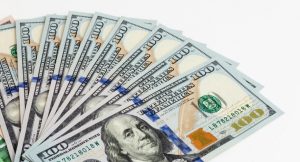STERLING RISES AGAINST DOLLAR ON FED-BOE POLICY DIVERGENCE
Sterling gained against the dollar on Tuesday, after weaker British jobs data did not shake investors’ belief that the Bank of England would keep rates steady, while the U.S. currency was under more pressure from a likely Federal Reserve rate cut. Sterling rose as much as 0.3% to $1.3645, its highest in more than two months, before paring some of those gains to trade at $1.3624. The pound weakened against the euro, which rose 0.2% to 86.65 pence, consolidating within its recent narrow range. While the Fed is expected to cut rates by 25 basis points this week amid softening U.S. jobs data, the BoE is widely seen holding steady, which in theory would attract more investors to the higher-yielding pound. A report on Tuesday from the Office for National Statistics showed payrolls fell for a seventh consecutive month, while private sector wage growth slowed to 4.7% between May and July, down from 4.8% in the previous three months. The data suggest Britain’s labour market is cooling, which could ease some concern among some BoE officials over persistent inflation pressures, but was unlikely to move the needle for Thursday’s rate decision. “UK labour data showed tentative signs weakness may have bottomed out over the summer, though the figures are unlikely to alter the near-term BoE outlook,” said Michael Brown, senior research strategist at Pepperstone. MUFG senior currency analyst Lee Hardman said the pound would likely get a continued lift from investor expectations of a divergence between BoE and Fed monetary policy. Elsewhere, the dollar was a touch weaker against a basket of peers, with investors fully expecting a Fed rate cut on Wednesday. On the political front, the United States and Britain will announce more than $10 billion in energy and tech deals during President Donald Trump’s second state visit this week, as London seeks progress on steel tariffs under a broader trade pact.

POUND STERLING EDGES LOWER AGAINST US DOLLAR AHEAD OF FED’S MONETARY POLICY OUTCOME
The Pound Sterling ticks down to near 1.3640 against the US Dollar (USD) during the European trading session on Wednesday. The GBP/USD pair faces marginal selling pressure on signs of slowing UK inflation growth. Meanwhile, the US Dollar remains on the back foot amid firm expectations that the Federal Reserve (Fed) will cut interest rates in the monetary policy announcement at 18:00 GMT. At the time of writing, the US Dollar Index (DXY), which tracks the Greenback’s value against six major currencies, holds onto losses near a fresh two-month low of 96.60 posted on Tuesday. According to the CME FedWatch tool, traders see a 96% chance that the Fed will reduce interest rates by 25 basis points (bps) to the 4.00%-4.25% range, while the rest support a bigger reduction of 50 bps. As the Fed is widely anticipated to start the monetary-easing campaign, the next trigger for the US Dollar would be the Fed’s Summary of Economic Projections (SEP), which includes the dot plot, and Fed Chair Jerome Powell’s views on inflation and the labor market outlook. According to analysts at Morgan Stanley, the Fed is anticipated to cut interest rates by 25 bps in each of the remaining three policy meetings this year, indicating that borrowing rates will go lower to the range of 3.50%-3.75% by 2025. Fed dovish expectations were intensified by growing US labor market concerns and signs that the impact of tariffs on inflation won’t be persistent. Chair Powell also warned of downside labor market risks in his speech at the Jackson Hole Symposium in August, and added they could materialize quickly if the central bank delays policy adjustment. Additionally, investors will also focus on the newly added member, Stephen Miran, to the rate-setting committee. Market participants would like to know whether Miran’s rate would be biased towards US President Donald Trump’s economic agenda. Meanwhile, Fed Governor Lisa Cook is set to join her fellow Federal Open Market Committee (FOMC) members in the monetary policy announcement as the US appeals court blocked President Trump’s firing of Cook on mortgage allegations.
POUND AND GILTS FALL AFTER SHRUGGING OFF BOE BALANCING ACT
The pound slipped and gilt yields rose on Thursday, reversing course after having offered a muted reaction after the Bank of England kept rates unchanged and slowed the pace of its government bond holding reductions. Analysts said the shift appeared to stem more from stronger U.S. employment data that boosted the dollar broadly and sent bond yields higher than from the BoE’s policy steps. Sterling was down 0.6% at $1.3541, while the yield on the benchmark 10-year gilt rose 5 basis points to 4.67%. “I don’t see any sort of clear catalyst for the move, besides the fact that it seems to have gathered momentum since U.S. traders entered the fray,” said Michael Brown, senior research strategist at Pepperstone. Earlier, BoE policymakers voted 7-2 to keep rates unchanged at 4% while slowing the annual pace at which the central bank sells gilts it purchased between 2009 and 2011 to 70 billion pounds from the current 100 billion pounds, in line with economist forecasts. UK inflation is almost twice the central bank’s 2% target, and there are growing signs of weakness in the labour market. Yet money markets are only fully pricing in another rate cut by March next year, something some investors believe may be overly pessimistic. “There could be good news on the horizon that allows a few more cuts than the market expects. Commodity prices are not going up and that may weigh on inflation,” said Christopher Mahon, multi-asset manager at Columbia Threadneedle. “The UK is now the most stagflationary economy in the developed world. A brutal mix of high inflation, weak growth, and rising unemployment,” said Lloyd Harris, head of fixed income, Premier Miton Investors. “The next big moment for the BoE and for all sterling markets is the Autumn Budget,” Harris said. Finance Minister Rachel Reeves will present her budget on November 26. She is under pressure to stick to her own rules on borrowing to keep Britain’s finances on track, as reflected in some of the large swings in yields on long-term UK bonds this year. The central bank said it would skew sales away from long-dated gilts to minimise the impact on turbulent bond markets. Britain’s 30-year borrowing costs had climbed to their highest level since 1998 earlier this month but have since eased. “The Bank of England’s decision to slow its pace of bond sales was fairly consensus, but the decision to skew those sales towards shorter maturities should provide some relief to the long-end,” said Matthew Landon, global market strategist at J.P. Morgan Private Bank in London. The 30-year gilt yield was last up 6 bps at 5.493%, tracking a similar sized move in its U.S. counterpart. Germany’s 30-year bond yield was up 6 bps as well at 3.30%. The BoE is alone among major central banks in conducting outright sales of the government bonds it bought to boost the economy in the years after the 2008 global financial crisis, rather than just letting them mature. British stocks held on to their post-BoE gains, with the benchmark FTSE 100 stock index last up 0.3%, while the more domestic-focused mid-cap stock index was up nearly 0.4%. “There’s always going to be some sensitivity around the future inflation profile. And given the background of where the UK has been, I expect the Bank of England to remain cautious,” Matt Hudson, UK portfolio manager at River Global, said.

DOLLAR EXTENDS POST-FED REBOUND, STERLING HIT BY FISCAL WORRIES
The U.S. dollar rose on Friday, extending its rebound against most major currencies, as traders reassessed the near-term outlook after the Federal Reserve cut interest rates this week but signaled that further easing would proceed only gradually. The U.S. Dollar Currency Index, which tracks the greenback against six major peers, was up 0.3% at 97.653 on Friday. The gauge, which fell 1% on Monday and Tuesday on expectations the Federal Reserve might flag a rapid series of rate cuts, was nearly flat for the week. On Wednesday, the Federal Reserve delivered an expected rate cut but signaled little urgency to lower borrowing costs quickly in the coming months. The Fed’s rate forecast or the so-called “dot plot” showed projections of two more rate reductions this year. “It’s really a week of two halves,” Marc Chandler, chief market strategist at Bannockburn Forex, said. “The votes, the actual dots, were not as dovish as the statement and the concerns about the labor market suggested,” Chandler added. With the dollar having come under selling pressure in the days before the Fed decision, the U.S. currency may have room to rebound further. “What we’re telling our clients is that this is just a countertrend move. If you must sell dollars, you’ll have a better level shortly,” Chandler said. Sterling fell on Friday after Britain’s borrowing surged past official forecasts, further complicating the country’s fiscal outlook, while the yen firmed after the Bank of Japan’s decision to hold rates steady revealed divisions on the board. The pound was one of the worst performers among G10 currencies, mirroring investors’ concerns that British finance minister Rachel Reeves may not be able to keep her budget under control. The currency was down 0.6% to $1.347, heading for its biggest two-day drop since late July. “Despite a better reading from UK August retail sales data, poor UK government borrowing data have highlighted the difficulties Chancellor Reeves faces in delivering the UK budget in November,” Jane Foley, head FX strategist at Rabobank, said. Data published early on Friday showed British retail sales rose by a stronger-than-expected 0.5% in August, helped by sunny weather, but sales growth in July was revised slightly down. The borrowing figures – the highest for the first five months of a financial year since 2020 – could pave the way for further tax increases. Even before Friday’s data, Reeves had been expected to announce new tax increases in her November 26 budget to stay on track to meet her fiscal rules and avoid fresh upheaval in financial markets.
US DOLLAR ERASES WEEKLY LOSSES
Four key US equity benchmarks, the S&P 500, Nasdaq 100, Dow Jones Industrial Average, and Russell 2000 all closed at record highs simultaneously on Thursday, a rare event that has occurred only 25 other times this century. This isn’t just megacap tech leading the charge. The Russell 2000’s breakout shows small caps are participating, which often reflects confidence in domestic growth and risk appetite. The gains mark a reversal from traders’ choppy reaction to the Federal Reserve’s (Fed) decision to cut interest rates in the previous session. Markets initially embraced the Fed’s latest move as dovish. Aside from Miran’s lone 50bp dissent, the revised Dot Plot pointed to two more rate cuts this year, triggering a drop in short-term yields and a softer dollar. But that narrative didn’t last. As Chair Powell began his press conference, sentiment flipped fast: two-year swap rates surged past pre-meeting levels, the yield curve steepened, equities declined and the dollar index not only recovered but extended gains into Thursday, posting its strongest daily performance in weeks. This reversal wasn’t just about Powell’s tone – it was also about positioning. Traders appeared to unwind dovish bets, and Powell’s reluctance to label inflation as “transitory” left the door open for further price pressures. His framing of the cut as a “risk-management” move also diluted the dovish signal from the Dot Plot. For those questioning the Fed’s independence, Powell’s delivery offered reassurance. Still, the dollar’s bounce looks more like a positioning squeeze than a sustainable trend and if the equity rebound is anything to go by, the dollar’s recovery is likely to be fleeting. Indeed, lower funding costs are also likely to encourage increased hedging activity in USD, which could act as a brake on any significant upward moves in the currency. Hence, despite the market whiplash, we see this as a bearish development for the dollar. The Fed has clearly shifted toward easing, with its focus now tilting toward employment. We continue to expect two more 25bp cuts this year and believe lower funding costs will weigh on the buck – especially as seasonal headwinds build into year-end. Meanwhile, the Bank of Japan’s decision added fresh fuel to FX markets. Two dissenting votes have led traders to price in higher odds of a 25bp hike at the October meeting, propelling the yen to the top of the G10 leaderboard today.

- CAPITALDIGEST MARKET REVIEW , 03/11/2025November 3, 2025
- CAPITALDIGEST DAILY NEWS, 03/11/2025November 3, 2025
- CAPITALDIGEST MARKET REVIEW, 22/09/2025September 22, 2025
Enter your email address for receiving valuable newsletters.
- CAPITALDIGEST DAILY NEWS, 03/11/2025NNPCL WEIGHS OVERHAUL, REPURPOSING OPTIONS FOR REFINERIES The Nigerian National Petroleum Company Limited has said...November 3, 2025
- CAPITALDIGEST DAILY NEWS, 22/09/2025OIL REFORMS DRIVE $18.2BN DEALS – FG Nigeria’s oil and gas sector is experiencing a...September 22, 2025
- CAPITALDIGEST MARKET REVIEW, 15/09/2025US DOLLAR RETREATS AS INFLATION RUNS WARM, JOBLESS CLAIMS TICK HIGHER The U.S. dollar weakened...September 15, 2025












